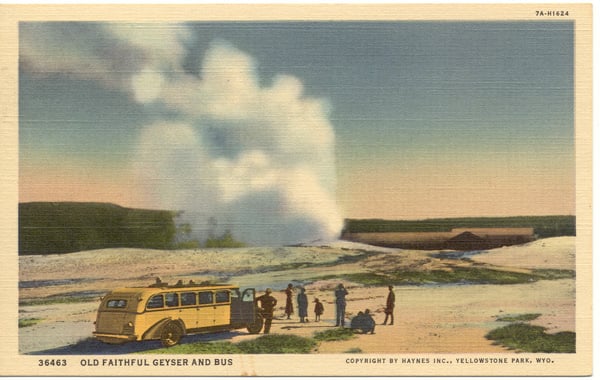Top 10 Historic Events in Yellowstone
In 1997, Lee Whittlesley, retired Park Historian, shared his picks for the most significant events in the park’s history which still hold true 25 years later.

1871-1879: The park idea was new, knowledge of ecosystem management had not evolved, and management guidelines, therefore, were not well established. Sadly, a massive slaughter of animals took place in these early years.
March 1, 1872: An act of Congress (The Organic Act) establishes Yellowstone National Park.
August 17, 1886: The U.S. Army takes over the management of the park. Fort Yellowstone at Mammoth stands as a reminder of their presence, now National Park Service headquarters.
1894: The Lacey Act, a critical piece of legislation, prevents hunting and destruction of wildlife in the park and is still instrumental in arresting poachers today.
1915: The automobile is first allowed in the park. This says Whittlesley, “changed everything.”
1916: The establishment of the National Park Service during President Woodrow Wilson’s administration.
1948: The park recorded its one-millionth visitor. Just seventeen years later, in 1965, the two millionth visitor came through, and the three millionth in or around 1992. Check out Yellowstone’s visitation timeline on page 21.
1963: The Leopold Report, by scientist Starker Leopold leads to the establishment of “natural regulation” as the guiding philosophy of park management. It still guides park resource management today.
1988: Fires burn or affect 36 percent of the park. The park stayed open the entire summer save for one single day. Villages throughout the park faced evacuations, with Mammoth Hot Springs being the last on September 4. The park closed for the season on September 10.
1995: After an approximate sixty-year absence, wolves were reintroduced to Yellowstone, fully restoring its fauna to the ecosystem. Fourteen wolves were transplanted from Canada to containment pens in Lamar Valley.
In looking ahead to the future, lessons of the past serve as guideposts. As park employees, we are uniquely positioned to be stewards of Yellowstone as we introduce visitors to the wonders of the park, provide magical experiences, and, in turn, create another steward of Yellowstone.